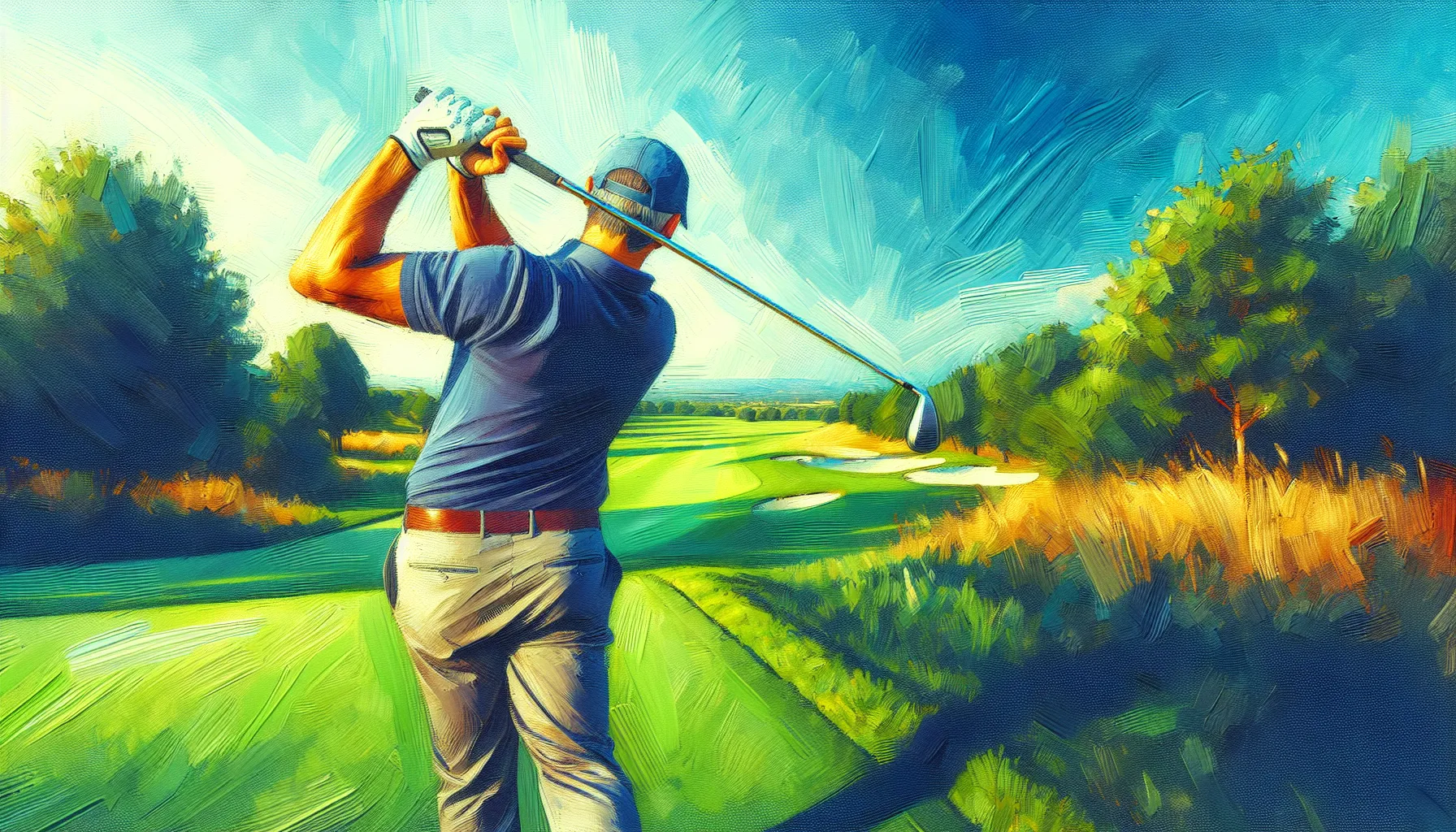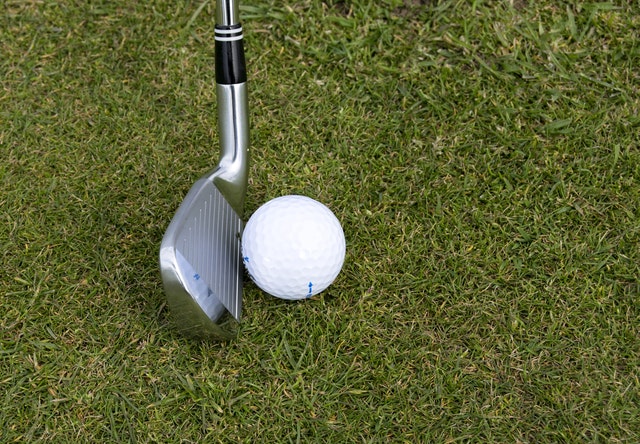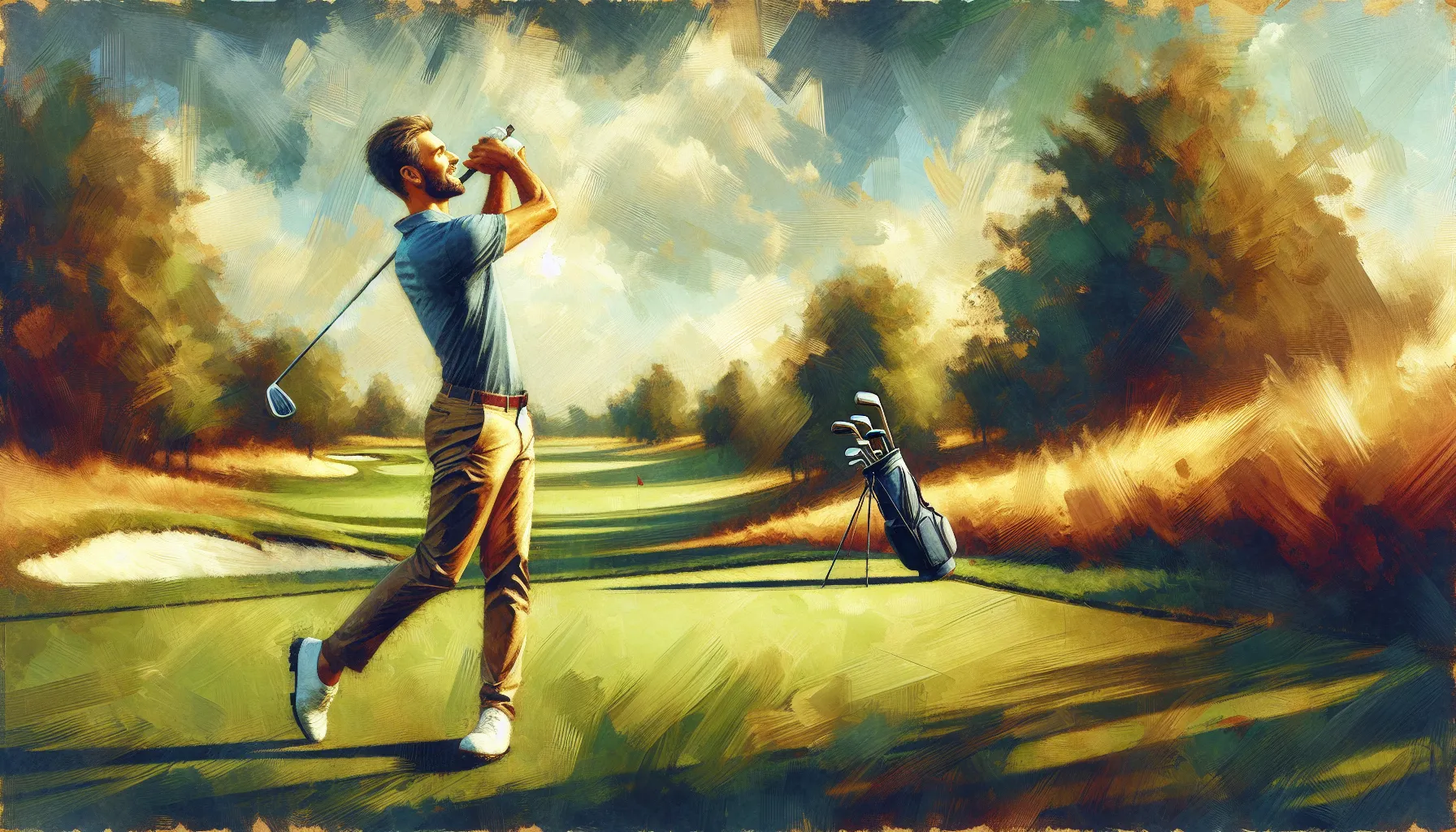How to Hit the Golf Ball Lower: Master Your Trajectory for Better Scores
Are you tired of watching your golf balls soar sky-high, only to fall short of your target? Ready to unlock the secret to those piercing, low-trajectory shots that pros use to dominate the course? Buckle up, because I'm about to share the insider tips on how to hit the golf ball lower that will have your buddies picking their jaws up off the fairway. Plus, stick around for the game-changing FAQ section at the end – it's packed with answers to all your burning questions about mastering low ball flight.
As weekend golfers, we've all been there. You step up to the tee, feeling confident, only to watch your ball balloon into the air and fall short of your target. The frustration of losing distance, accuracy, and control due to high ball flight can be maddening. Not to mention how it affects your score and your pride when playing with more experienced golfers.
Imagine the disappointment of consistently hitting shots that don't perform as you envision. The wind becomes your enemy, your drives lack that satisfying "boom" off the tee, and your approach shots never seem to hold the green. It's enough to make you want to snap your clubs over your knee and take up knitting instead.
But hold on there, partner! Before you trade in your golf bag for a basket of yarn, I've got some wickedly effective strategies to help you master the art of hitting the golf ball lower. As a fellow weekend golfer who's been in your spikes, I've uncovered the secrets to achieving that coveted penetrating ball flight. By the end of this article, you'll have the knowledge and techniques to compress the ball like a pro, control your trajectory, and finally achieve those laser-like shots that'll have your playing partners green with envy.
So, are you ready to revolutionize your golf game and hit the ball lower than you ever thought possible?
 Master the art of hitting the golf ball lower for improved control and accuracy.
Master the art of hitting the golf ball lower for improved control and accuracy.The Day I Discovered the Power of the Low Ball Flight
Picture this: there I was, a frustrated weekend golfer just like you. Every round was a battle against the wind, watching my shots balloon into the air only to fall short of my target. I was losing distance, accuracy, and most importantly, my sanity. My buddies were outdriving me, and I felt like I was always playing catch-up.
Determined to improve, I spent countless hours on the range, trying every tip and trick I could find. I bought new clubs, experimented with different ball brands, and even considered taking up yoga to improve my flexibility. But nothing seemed to work. My shots were still soaring higher than my hopes of ever breaking 80.
Then, one fateful day, I was paired with an older gentleman at my local course. His drives weren't the longest, but they were straight as an arrow and seemed to pierce through the wind effortlessly. Intrigued, I asked him his secret. He smiled and said, "Son, it's all about hitting it low and hard."
Over the next few holes, he shared his framework for hitting lower shots:
1. Ball position: Move it back in your stance
2. Hands: Press them slightly forward at address
3. Weight distribution: Favor your lead foot
4. Club selection: Often, less is more
5. Follow-through: Keep it low and controlled
I was skeptical at first, but as I started implementing his advice, something magical happened.
My shots began to transform. They were no longer at the mercy of the wind, instead cutting through it like a hot knife through butter. My drives gained an extra 20 yards of roll, and my approach shots started sticking to greens like they were magnetized.
But the real epiphany came during a particularly windy round a few weeks later. While my playing partners struggled to keep their balls in play, I was hitting one solid shot after another. I finished with my best score ever, breaking 80 for the first time.
That day, I realized the power of the low ball flight. It wasn't just about looking cool or impressing my buddies (although that was a nice bonus). It was about having control over my game, adapting to conditions, and ultimately, shooting lower scores.
Now, I'm here to share that knowledge with you. Are you ready to experience your own low-ball epiphany?
Now, let's dive into the nitty-gritty of how to hit the golf ball lower and transform your game.
1. The Setup: Your Foundation for Low Ball Flight
To hit the golf ball lower, you need to start with the right setup. Here's how to position yourself for success:
- Ball Position: Move the ball back in your stance, about 1-2 inches behind where you'd normally play it. This promotes a descending blow, which is crucial for lowering your trajectory.
- Hand Position: Press your hands slightly forward at address. This de-lofts the club face, reducing the launch angle.
- Weight Distribution: Shift about 60-70% of your weight onto your lead foot. This helps you hit down on the ball more effectively.
- Stance Width: Widen your stance slightly. This lowers your center of gravity and promotes a more stable base.
Remember, these adjustments might feel a bit awkward at first, but stick with it. Your body will adapt, and soon it'll become second nature.
2. The Swing: Crafting Your Low Ball Artillery
Now that you're set up correctly, it's time to focus on the swing itself:
- Backswing: Keep it shorter and more controlled. A three-quarter backswing often works wonders for hitting it low.
- Downswing: Focus on a smooth transition and maintaining your spine angle. Avoid the temptation to lift up through impact.
- Impact: Hit down and through the ball. Imagine you're trying to take a divot after the ball.
- Follow-through: Keep it low and abbreviated. Your hands should finish around waist height, not up by your shoulders.
Pro Tip: Practice this swing with a 7-iron first. Once you've got the feel, you can apply it to other clubs in your bag.
3. Club Selection: Choose Your Weapons Wisely
When it comes to hitting it low, club selection is crucial:
- Longer Irons: These naturally produce a lower ball flight. Consider using a 4-iron instead of a hybrid for those long approach shots.
- "Knock-down" Shots: Learn to hit your clubs with less than full power. A smooth 80% swing often produces a lower, more controlled flight.
- The Magical 3-Wood: For tee shots on windy days, a 3-wood can be your best friend. It naturally produces a lower trajectory than a driver.
Remember, it's not always about hitting your longest club. Sometimes, sacrificing a bit of distance for control is the smartest play.
4. The Mental Game: Thinking Your Way to Lower Ball Flight
Hitting it low isn't just about physical technique. It's also a mental game:
- Visualization: Before each shot, picture the low, penetrating ball flight you want to achieve.
- Commitment: Once you decide to hit it low, commit fully to the shot. Half-hearted attempts rarely produce good results.
- Patience: Learning to hit it low consistently takes time. Be patient with yourself and celebrate small victories along the way.
5. Practice Drills: Honing Your Low Ball Skills
Here are a few drills to help you master the low ball flight:
a) The Limbo Drill:
- Set up two alignment sticks: one at waist height about 10 feet in front of you, and another at knee height about 20 feet away.
- Practice hitting shots that go under the first stick but over the second.
- This helps you learn to control your trajectory without sacrificing distance.
b) The Towel Drill:
- Place a towel on the ground about a foot behind your ball.
- Practice hitting shots without touching the towel.
- This encourages a steeper angle of attack, crucial for hitting it low.
c) The Half-Swing Challenge:
- Using your 7-iron, practice hitting shots with only a half backswing.
- Focus on solid contact and a low follow-through.
- Gradually increase your backswing length while maintaining the low ball flight.
6. Adapting to Different Situations
Knowing how to hit it low is great, but knowing when to use this skill is equally important:
- Windy Conditions: The lower you hit it, the less the wind will affect your ball. This is especially useful for headwinds.
- Under Trees: When you need to keep it low to avoid branches, these techniques are a lifesaver.
- Links-style Courses: On firm, fast fairways, a low shot that runs out can give you significant extra distance.
- Approach Shots: A low, spinning approach shot can help you stick the green when you need to stop the ball quickly.
Key Takeaways: Your Low Ball Flight Cheat Sheet
Alright, weekend warrior, let's recap the most crucial points to remember when you're aiming to keep that ball flight lower than your handicap:
• Adjust Your Setup:
- It moves the ball back in your stance so you can compress it like a pro, which means more distance and control.
- It presses your hands forward at address to de-loft the club, resulting in a piercing trajectory that cuts through the wind.
- It shifts your weight to your lead foot for a descending blow, which translates to better contact and lower flight.
• Master Your Swing:
- It keeps your backswing shorter and more controlled for consistency, allowing you to replicate that perfect low shot more often.
- It focuses on a smooth transition and maintaining spine angle, which means more accuracy and fewer sliced shots.
- It emphasizes hitting down and through the ball, resulting in that satisfying "thump" at impact and a penetrating ball flight.
• Choose Your Clubs Wisely:
- It utilizes longer irons for naturally lower trajectories, giving you more options in your shot selection.
- It employs the "knock-down" shot technique, which means you'll have a secret weapon when the wind picks up.
- It makes friends with your 3-wood off the tee, resulting in straighter drives and more fairways hit.
Now, here's the million-dollar question: Are you ready to put these low ball flight techniques into practice and watch your scores plummet faster than your new trajectory? Remember, mastering this skill isn't just about looking cool (although trust me, you will). It's about taking control of your game, adapting to any condition the course throws at you, and ultimately, enjoying golf more than ever before.
So grab your clubs, head to the range, and start working on that penetrating ball flight. Your golfing buddies won't know what hit them (but you will – it'll be your new, laser-like low shots). Don't wait for the next windy day to catch you unprepared. Start practicing now, and the next time you tee it up, you'll be ready to show off your new superpower. After all, in golf as in life, it's not about how high you can fly, but how well you can soar, even when flying low.
FAQ: Everything You Need to Know About Hitting the Golf Ball Lower
How do you hit a golf ball lower?
How do you hit a golf ball lower?
To hit a golf ball lower, move the ball back in your stance, press your hands forward at address, and focus on hitting down on the ball with a descending blow. Keep your follow-through low and controlled. This combination de-lofts the club and reduces the launch angle, resulting in a lower ball flight.
What club hits the lowest golf shot?
What club hits the lowest golf shot?
Generally, longer irons like the 3-iron or 4-iron hit the lowest golf shots. However, you can hit any club lower by adjusting your setup and swing as described above. Even a wedge can be hit with a low trajectory when needed.
How do you hit a punch shot in golf?
How do you hit a punch shot in golf?
A punch shot is a low-flying shot often used in windy conditions or to keep the ball under obstacles. To hit a punch shot:
1. Choose a club with more loft than you'd normally use for the distance
2. Move the ball back in your stance
3. Grip down on the club
4. Take a shorter backswing
5. Follow through low, finishing with your hands around waist height
This technique reduces spin and keeps the ball flight low and penetrating.
How do I stop hitting the golf ball so high?
How do I stop hitting the golf ball so high?
You're probably thinking you need to swing harder to keep the ball low, right? Well, actually, it's more about technique than power. To stop hitting the ball so high:
1. Check your ball position - it might be too far forward in your stance
2. Avoid "scooping" at impact - focus on hitting down on the ball
3. Use a club with less loft for the shot
4. Practice the setup and swing changes outlined in this article
Remember, a lower ball flight often leads to more control and consistency.
What are the benefits of hitting the golf ball lower?
What are the benefits of hitting the golf ball lower?
Hitting the golf ball lower offers several advantages:
1. Better wind penetration, reducing the impact of headwinds and crosswinds
2. More roll on firm fairways, potentially increasing overall distance
3. Improved control and accuracy, especially on approach shots
4. Ability to play shots under obstacles like tree branches
5. More consistent ball striking, as it promotes solid contact with the ball
You're probably thinking lower shots are only for pros, right?
You're probably thinking lower shots are only for pros, right?
Well, actually, mastering this skill can benefit golfers of all levels, helping you adapt to various course conditions and lower your scores.
How do I hit my driver lower?
How do I hit my driver lower?
To hit your driver lower:
1. Tee the ball lower - about half the ball should be above the club face
2. Move the ball slightly back in your stance
3. Tilt your spine away from the target at address
4. Focus on a level or slightly descending blow at impact
5. Finish with a low follow-through
Remember, the goal is to reduce the launch angle without sacrificing too much backspin, which is crucial for driver distance.
Can changing my equipment help me hit the ball lower?
Can changing my equipment help me hit the ball lower?
Yes, equipment can play a role in controlling ball flight. Consider:
1. Using a lower-lofted driver (9.5° or 10.5° instead of 12°)
2. Switching to a lower-spinning golf ball
3. Using stiffer shafts in your clubs
4. Considering irons with less offset
However, technique is still the most important factor. Don't rely solely on equipment changes to lower your ball flight.
How do I hit a low iron shot?
How do I hit a low iron shot?
To hit a low iron shot:
1. Choose one more club than you'd normally use for the distance
2. Move the ball back in your stance
3. Lean the shaft forward at address
4. Take a three-quarter backswing
5. Focus on a smooth, controlled swing with a low finish
This technique works great for hitting into the wind or running the ball onto the green.
Will hitting the ball lower reduce my distance?
Will hitting the ball lower reduce my distance?
You're probably thinking lower shots always mean less distance, right? Well, actually, in many situations, a lower ball flight can increase your overall distance. While the carry distance might be slightly less, you'll often get more roll, especially on firm fairways. Plus, in windy conditions, a lower shot will maintain its distance better than a high one.
How do I practice hitting lower shots?
How do I practice hitting lower shots?
To practice hitting lower shots:
1. Start with half-swing punch shots using a 7-iron
2. Gradually increase your swing length while maintaining the low ball flight
3. Use alignment sticks to create a "tunnel" to hit through
4. Practice on windy days to see the real-world benefits
5. Experiment with different clubs and situations on the course
Remember, like any golf skill, consistency comes with practice. Don't get discouraged if it doesn't click immediately.















